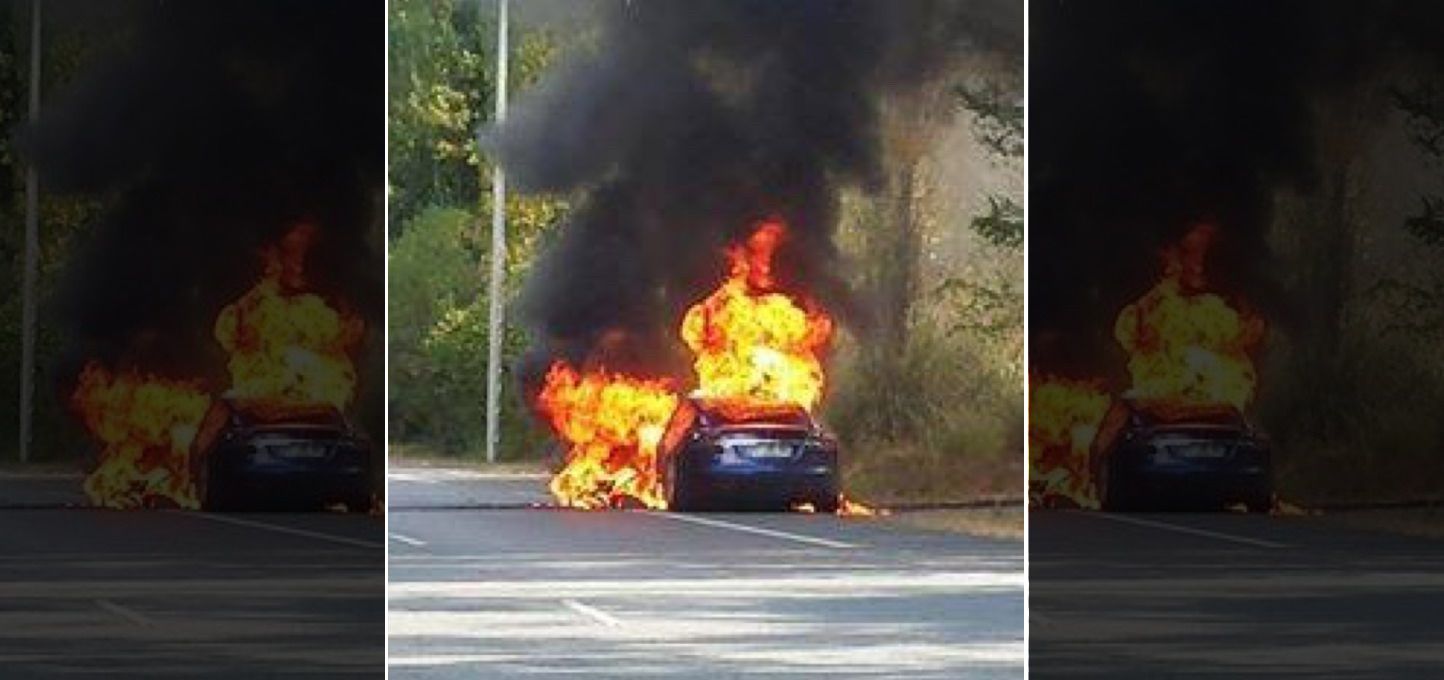A defect in the bolted electrical connection has been revealed as the cause of the fire that engulfed a Tesla Model S in France during a test drive. The revelation comes from Tesla itself, which conducted an investigation in the aftermath of the fire. According to the automaker, one of those connections was “improperly tightened” because it was done manually instead of the usual process of having a robot do it.
The defect ended up causing the electric car to go up in flames, but only after the occupants heard a loud noise, prompting the car’s warning message to flash. The Tesla employee who was riding in the car immediately instructed the driver, Nicolas Cano, to pull the car over before it ended up catching fire.
Fire fighters immediately rushed to the scene only to see the charred remains of the car as witnesses reported seeing the Model S burn to the ground in a matter of minutes.
Charles Delaville, Tesla’s French communications manager, spoke to Fox News and went into detail about the cause of the fire. According to Delaville, the electrical connections on its vehicles are usually “installed by a robot,” but for whatever reason, connections on the car that burned down was “installed manually.”
Neither Delaville nor any other person from Tesla have elaborated on why the Model S in question’s electrical connections were installed manually.
Continue after the jump to read the full story.
Tesla has a lot of explaining to do
It’s a little disconcerting to see all these news about Tesla, most of which are painting the electric car maker in a less-than flattering light. Whether it’s issues surrounding its Autopilot system or problems with updates on the Model X, there seems to be a growing number of negative publicity surrounding the company that’s becoming more and more difficult to sweep under the rug.
This issue, in particular, is especially troubling because Tesla itself is admitting that the problem came from the car’s production. More worrisome is the admission that there appears to be some issues pertaining to the production of the Model S. I’m not an expert of all things technical, but when somebody comes up and says that a certain part of the car that was supposed to be done by a robot was instead done by a human, it points to a lot of questions surrounding the kind of production process that Tesla has in its facilities.
Sure, the company didn’t elaborate on the explanation but on the surface, why would something that was supposed to be done by a robot get done by a human? Isn’t there supposed to be a clear-cut process behind the production of these models? Was there something wrong that day in the production line that forced Tesla to make manual installations of what has turned out to be sensitive components? Most importantly, is this the only Tesla model that’s affected by this?
All these questions have not yet been answered and it’s very important for Tesla to expound on the vague explanation that it has already given. For the sake of owners of its models, Tesla needs to elaborate on this and if there needs to be a recall of Tesla units that have been affected, the automaker should act quickly before another episode like this happens that ends in a tragic manner.

